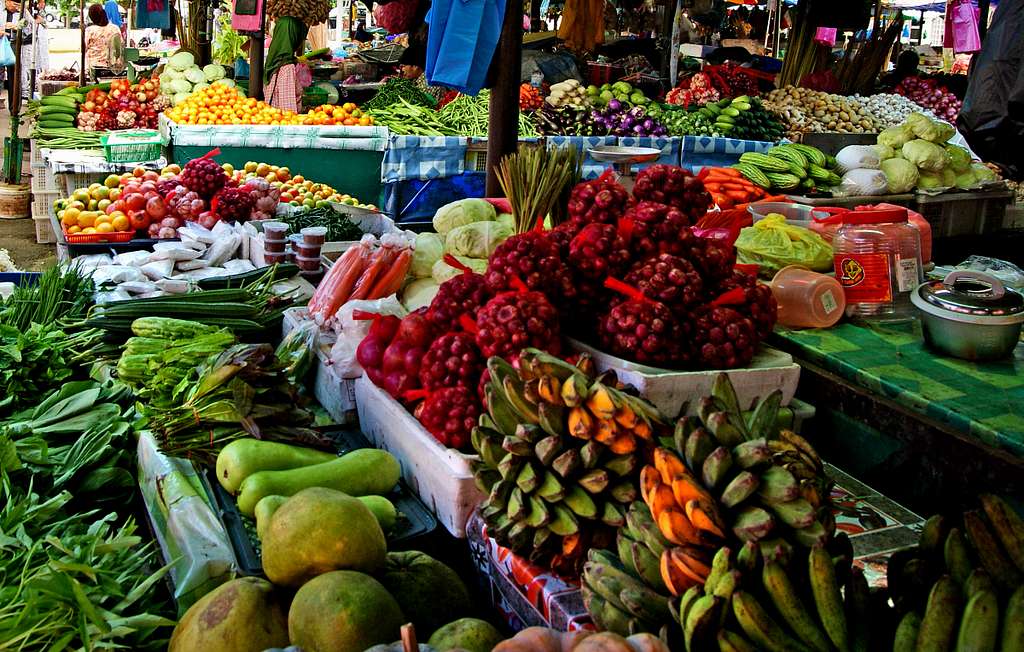Introduction to Local Ingredients
In the past couple of decades, the farm-to-table movement has really taken off, encouraging us to reimagine our plate and commit more fully to the richness of local ingredients. But what does it really mean to bring local ingredients into our daily lives? It simply means sourcing fruits and vegetables, meats, and dairy products from farms and markets nearby. This enables food to be fresher and have more flavor, while helping to boost local economies.
Using local ingredients heightens not only the flavors of your meals, but it also connects you with your community. When you’re going to your local farmer’s market for fresh fruits and vegetables in season, or joining a CSA, you’re not just getting food-you’re participating in that sustainable cycle that helps everyone.
Most of the time, local ingredients are picked at their ripest points, which then provides really vibrant flavors and increased nutritional value. But they also boast a lower carbon footprint, thereby reducing the amount of carbon dioxide emitted in the atmosphere due to the transportation of food over long distances. By adding these touches of fresh and local to your cooking, one is not only serving a healthier body but also contributing to a healthier planet and a stronger food system. Smell the simplicity and richness of the local ingredients and let the chef genius inside you break loose!
Benefits of Using Local Ingredients
Besides using local produce in everyday meals, its benefits go way beyond dinner plates. For one, local foods are typically much fresher and more flavorful than imported ones. When fruits and vegetables are picked at the peak of ripeness and reach your table in a relatively short period of time, you get a flavor explosion simply not achievable from items that may have journeyed several thousand miles.
Furthermore, it would result in a sustainable food system in that supporting local farmers depicts support for a food system that is sustainable-by opting for local, you are into the local economy, helping small-scale producers to have a meaningful say in their community, which remains active and robust. This option reduces carbon footprints in long-distance travels in search of food; it is an environmentally friendly option.
Besides, local ingredients are more than likely grown in methods that are considerate of biodiversity and the ecosystem. That not only makes for healthier meals but also helps in maintaining the local landscape and encourages forms of agriculture that are easy on our planet.
But above all, cooking with local ingredients may give rise to a feeling of belonging within your community. Each bite tells a story of local traditions celebrated, the change in seasons, and the hard work of farmers. A delicious way to embrace and celebrate the unique flavors of your region.
Identifying Local Ingredients in Your Area
The process of finding out what is locally available can be a rather exciting culinary adventure that helps your community and freshens up flavors in your meals. Start off with understanding what all those local farmers’ markets offer, for it is a treasure trove of seasonal produce, artisanal products, and other regionally unique items that may not have been easily known. Ask the vendors questions; they are generally enthusiastic about their merchandise and may also advise on when an item tastes best.
Another great resource is something known as community-supported agriculture, or a CSA program. In joining a CSA, you will be given a special selection of fresh, locally sourced ingredients. Often arriving right to your doorstep, this will help you learn about new ingredients and experiment with them in the kitchen.
And don’t overlook local grocery stores that source out products from the region. Many stores now carry a section of local products, from dairy to grains. Check out food co-ops or specialty stores that source items in a highly sustainable manner; these are likely to also source from local farmers and producers.
Lastly, take advantage of technology! There are apps and websites out there that will help you find local farms, what is in season, and even recipes designed just for your region. By utilizing such a resource, it is very easy to incorporate local flavors into your everyday meals.
Seasonal Eating: Knowing Your Produce
Seasonal eating is more than a trend; it’s a way to live sustainably and can add richness to your culinary experiences. Knowing what is in season during any part of the year will empower you to make active choices about what goes into your meals.
Asparagus is vibrant in spring, as are sweet peas and fragrant herbs like basil and mint. These ingredients burst with flavor and elevate salads and pasta dishes to a new level. Come summer, the overabundance of tomatoes, cucumbers, and berries offers a cooling palette, really showcased best in light dishes. One might think to make a brightly colored caprese salad or a smoothie with berries to celebrate the season’s bounty.
As leaves start turning in autumn, root vegetables and hearty greens come into their own: roasted squash and earthy beets, kale in soups and stews to warm the belly. Winter brings citrus fruits, oranges, and grapefruits, cabbages, and potatoes that get merged into robust comforting meals.
By being attuned to what’s in season, you support not only your local farmers but also dishes at their most fresh and flavorful. Enjoy your local farmers’ market and let the seasons set the pace!
Simple Recipes Featuring Local Ingredients
- Farmers’ Market Salad: Toss together a mix of fresh greens, heirloom tomatoes, cucumbers, and radishes. Drizzle with a vinaigrette made from local olive oil and vinegar.
- Vegetable Stir-Fry: Sauté a colorful assortment of local vegetables like bell peppers, broccoli, and snap peas in a bit of garlic and ginger. Serve over rice or quinoa sourced from nearby farms.
- Herb-Infused Pasta: Cook your choice of pasta, then toss it with local seasonal vegetables like zucchini or asparagus. Add a handful of fresh herbs such as basil or parsley for an aromatic finish.
- Local Fruit Smoothie: Blend together seasonal fruits like berries or peaches with yogurt or a splash of almond milk. This refreshing drink makes for a quick breakfast or snack.
- Grilled Cheese with Local Cheese: Use artisanal cheese from a nearby dairy and pair it with locally baked bread. Add slices of fresh tomatoes or sautéed greens for an extra layer of flavor.
Tips for Shopping at Local Farmers’ Markets
Shopping at your local farmers’ market is one of the best ways to make newer and fresher introductions into your meals while supporting your community. Here are just a few ways you can make the most of your visits to the market.
First, get there early to get the best pick. Many vendors bring only limited quantities of their goods, and getting there at opening time will mean you have first dibs on the freshest produce. And don’t be afraid to ask the farmers questions about their products; many are more than happy to share their stories and methods of growing, and even some recipe ideas.
Next comes the open mind. Yes, you may have a shopping list, but be flexible and willing to experiment. Some seasonal vegetables and fruits will spur you to create dishes that you probably wouldn’t have made. Also, do your best to purchase items that are in peak season; they tend to be much more flavorful and less expensive.
And lastly, bring your reusable bags and containers to decrease waste and make transporting all of your goodies much easier. If you are not sure what exactly you will be doing with all of your fresh finds, consider cooking demonstrations that usually take place at these markets to get inspiration for, and practical tips on, how to put the local ingredients into daily meals. Happy shopping!
Incorporating Local Ingredients into Meal Planning

Adding local elements to meal planning can be fun and rewarding for your taste buds. That may mean checking out your farmer’s market to get to know some of the farmers and understand what’s in season. It supports your community and also means you’re using ingredients that are fresh and full of flavor.
From here, create a sample weekly menu that showcases these local finds. A rustic vegetable stir-fry made with newly harvested bell peppers, zucchini, and carrots meets locally sourced proteins: grass-fed beef or free-range chicken for a meal that’s wholesome.
And don’t forget to add the whole grains and beans to the dishes. Whole grain grains, such as quinoa or farro, made from regional farms, can provide a nutritional base; dried beans or lentils, grown from those farms, can give quite a heartiness to soups and salads.
Finally, put some of that bounty away by pickling, canning, or freezing seasonal fruits and vegetables so you can enjoy local flavors when they are out of season. That way, you can make local ingredients a staple in your kitchen all year long. Here are some creative, easy ways to preserve what you buy locally: With just a little imagination and planning, you can elevate your meals and support local agriculture at the same time.
Creative Ways to Preserve Local Ingredients
Yet, saving local ingredients not only extends their storage life but also allows you to enjoy your regional flavors throughout the year. One creative way this is done is by pickling. Cucumbers, radishes, or even cauliflower can be made into spicy side dishes with just a simple vinegar, sugar, and spice solution. This adds a nice crunch to salads, sandwiches, or a charcuterie board.
Another great option is fermenting, since it not only preserves but also heightens the nutritional benefits of your local harvest. Consider kimchi or sauerkraut made from seasonal vegetables like cabbage or carrots. Fermentation allows you not only to preserve but also to add probiotic benefits into your diet.
Capture the essence of summer in herb-infused oils or vinegars. Basil, rosemary, or thyme steeped in olive oil or vinegar for a few weeks will make flavor bases for dressings or marinades.
And last but not least, there’s the magic of freezing: chopping and blanching seasonal vegetables or making purees out of fruits to freeze in ice cube trays. This way, you will be able to bring in a little taste of your market into dishes throughout the year, for an extra touch of home during any time of the year.
Engaging with Your Community Through Local Food

Eating local is not only a matter of gastronomic choice; eating local is the celebration of regional flavors and a means of cementing bonds. You’re doing much more than support an economy when you source ingredients from farms and markets near you; you connect with very people who grow your food.
Begin at your local farmer’s market where the farmers and artisans can meet you, too. Ask them about their practices for growing and their favorite recipes. Such interaction only enhances the appreciation for what goes into your meals. Use seasonal produce in your dishes for freshness and to encourage much-needed conversation about the changing of seasons and stories about the time of harvest.
Here, organize a potluck using the local foodstuffs, and ask your friends and neighbors to contribute with dishes prepared from foods available locally. Such shared events help bind people together and bring out the variation in your local food culture.
By making these types of simple choices, you are not just eating; you are conversing with your community, honoring local culture, and crafting a much more sustainable food system-one delicious meal at a time.
Conclusion: Embracing Local Flavors in Daily Meals
- Visit Farmers’ Markets: Regular trips to your local farmers’ market can introduce you to fresh produce and artisanal products, fostering relationships with local farmers and producers.
- Join a CSA: Community Supported Agriculture (CSA) programs allow you to receive a weekly box of seasonal produce directly from a local farm, ensuring you always have fresh ingredients on hand.
- Grow Your Own Herbs: Even if you have limited space, growing a few herbs on your windowsill can add a burst of flavor to your meals and make every dish feel special.
- Explore Local Recipes: Research traditional dishes from your region that highlight local ingredients, and try your hand at recreating them.
- Plan Your Meals Around Seasonal Produce: By aligning your meal planning with what’s in season, you’ll enjoy peak flavors and support local agriculture.

